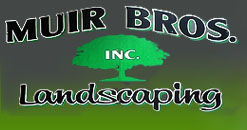Weeds start to germinate during the spring in lawns and garden beds. You can decrease weeds with proper maintenance techniques. The best defense against weeds and diseases is to grow thick, healthy grass. Follow the tips below and you’ll be seeing fewer weeds in no time!
Tip #1: Cut lawns at 3” or higher to drown out weeds.
The best thing you can do to control weeds is to not cut your lawn too short. Short grass creates the ideal growing environment for weeds – sun can easily penetrate the soil and weed seeds sprout when they receive sunlight. In addition to becoming a weed-haven, short grass will develop fewer roots, will require more frequent cuttings, and will need more water and fertilizer.
Longer grass shades the ground, keeping it cooler and delaying weed seed germination. If and when the weed seeds do sprout, they don’t have as much sunlight as they need for strong growth. Leaving your grass a bit longer also promotes a deeper root system and makes your lawn more tolerant to drought.
Tip #2: Use the “1/3 rule” when cutting
Never cut more than a third of the total height of the grass at a time. If you remove any more from the grass leaf blade, you will “scalp” the plants, which can take two or three mowing cycles to recover. As mentioned in tip #1, longer grass means deeper roots. The deeper the roots, the better it will resist disease and the less water it will require.
In addition to keeping the grass blade healthy, following the “1/3 rule” also promotes the lateral growth of grass. Yes, grass grows up, but it also grows across! The lateral growth is what really creates the full, dense and healthy looking lawn that makes the neighbors envious. This is what creates a full, dense, and healthy looking lawn that we all desire. Plus, the denser the lawn, the fewer the weeds!
Tip #3: Use the right fertilizer, pre-emergent herbicides and post-emergent herbicides.
Pre-emergents prevent weed seeds from germinating and are often applied once a year. Pre-emergents should not be applied too early in the season, when the weather can interfere with effectiveness. Early spring, or when the soil is consistently at 50 degrees, is usually a good time to apply. Proper application of a pre-emergent will prevent crabgrass, clover and dandelions.
Post-emergents are used once the initial spring season has begun and plants have started to grow. They work by traveling down the plant stalk and into the root system of weeds such as dandelions, crabgrass and nutsedge. Post-emergent herbicides usually need to be applied several times throughout the growing season. Often, a thorough final application during late fall will help prevent new weeds from growing in the spring and prevent weeds from spreading seeds.
Tip #4: Use proper seeding practices to fill bare patches in lawn
Just because the grass isn’t growing in these areas, does not mean weeds will not be able to! Weed seeds are more adaptable than grass seeds, so beat them to it! Repair the bare spots in your lawn before weeds have a chance to take over.
Tip #5: Proper irrigation
Ideally, lawns should receive 1-2” of water per week – longer, deeper waterings are better than frequent, small amounts of water. Daily watering encourages shallow roots and wastes water. Instead, water deeply (which promotes deeper root growth), checking to see when more is needed. Some signs that it’s time to water:
Footprints across the lawn remain compressed;
Grass takes on a slight bluish tint;
Soil resists when you push a screwdriver into the ground.
The most popular enemies in our area:
Dandelions:
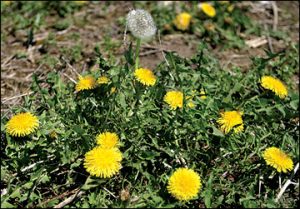
Dandelions are a perennial plant and can germinate anytime during the growing season, but most often germinate in the fall. They generally flower in the spring and early summer. Dandelions seem to be the weed that causes the most headaches for homeowners. Their roots are deep, making them extremely difficult to remove by hand. If left unchecked, dandelions will quickly spread in large multitudes.
For the most part, dandelions are usually a problem in weak lawns, bare areas or can be found growing along the edges of driveways, sidewalks and streets, where there is little or no competition from the grass. They don’t compete well with a thick, well-fertilized lawn that is mowed high and has been consistently watered.
A post-emergent broadleaf herbicide is usually the fastest way to rid your lawn of dandelions. Making a fall application of weed control is just as important as applying in the spring. If you prefer to try to remove the weeds without herbicide, you must dig them out individually, taking as much as the root as possible (a dandelion tool can assist with this). You can also try pulling off the top of the weed, and pouring boiling water over the root as well. Just be careful if trying to remove dandelions by hand. If you only succeed at removing the top growth, the root will remain underground, and a new plant will regrow.
Crabgrass:
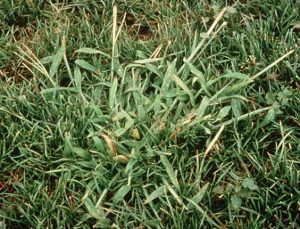
Crabgrass is an annual weed with a long germination period. The plant has spreading stems with wide leaves that lay relatively close to the ground and point outward. One crabgrass plant is capable of producing 150,000 seeds per season and growing up to 12” in diameter. Crabgrass is a difficult weed to control once it has sprouted and will leave large void areas in the lawn where they are killed. In turn, these “void areas” are typically popular stops for re-growth the following year.
There are two main conditions that help prevent crabgrass; a healthy lawn and the use of a pre-emergent herbicide. A healthy lawn limits weed growth, and the pre-emergent can help to stop weed seed germination. If the crabgrass has already sprouted, a good post-emergent weed killer should take care of it.
Clover
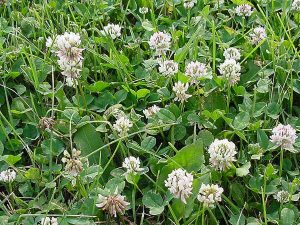 Clover is a broadleaf perennial weed and very aggressive. The most effective way to rid your lawn of it is to use a post-emergent herbicide. The post-emergent should be applied in both the spring and the fall for the best results. Once you get rid of it, it’s not likely to return in large amounts.
Clover is a broadleaf perennial weed and very aggressive. The most effective way to rid your lawn of it is to use a post-emergent herbicide. The post-emergent should be applied in both the spring and the fall for the best results. Once you get rid of it, it’s not likely to return in large amounts.
Nutsedge
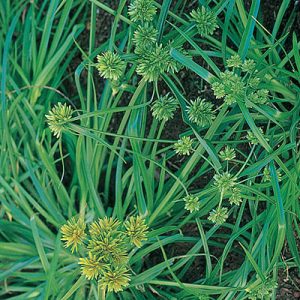
Nutsedge is a turf grass weed also known as nutgrass or swampgrass. Nutsedge grows more rapidly than most grasses and has a shiny, light yellow-green color. It has three leaves that form a triangular shaped stem. It is able to withstand close mowing, but will grow above the grass within 2-3 days. Nutsedge prefers moist soil, usually growing in low areas, ditches, marshy areas, and wherever water is abundant. Areas that have frequent, abundant rainfall during the growing season are noted for having nutsedge in lawns.
Unfortunately, nutsedge isn’t a broadleaf weed so the late spring post-emergent herbicides have little effect. To rid your lawn of this pesky weed, first identify whether it is the yellow or purple variety (no single herbicide can eliminate both types). Yellow nutsedge has yellow flowers, and purple nutsedge has – you guessed it – purple!
If you are only faced with a small amount of nutsedge, hand weeding may be effective. Since the weed has shallow roots, it can be easily removed from the grass.
If the problem is more widespread, choose a pre- or post-emergent herbicide recommended for nutsedge. Nutsedge is stubborn and may require several applications to eliminate.
One Final Weed-Removal Tip:
Water the soil around the weed thoroughly, completely soaking the weed. Insert your trowel vertically into the soil as close as possible to the weed stem. You should then be able to pull the weed out, roots and all.
Keep in mind that you’ll never get rid of all the weeds in your lawn. The wind will blow weed seeds from nearby lawns into your lawn, birds will deposit them and weed seeds are easily transported on shoes.
Follow the tips above and you should hopefully see fewer weeds in the seasons to come!
Contact us for a free estimate, and let us help you rid your lawn of weeds!
Michael Muir
Owner, Muir Bros. Landscaping and Snowplowing, Inc.
